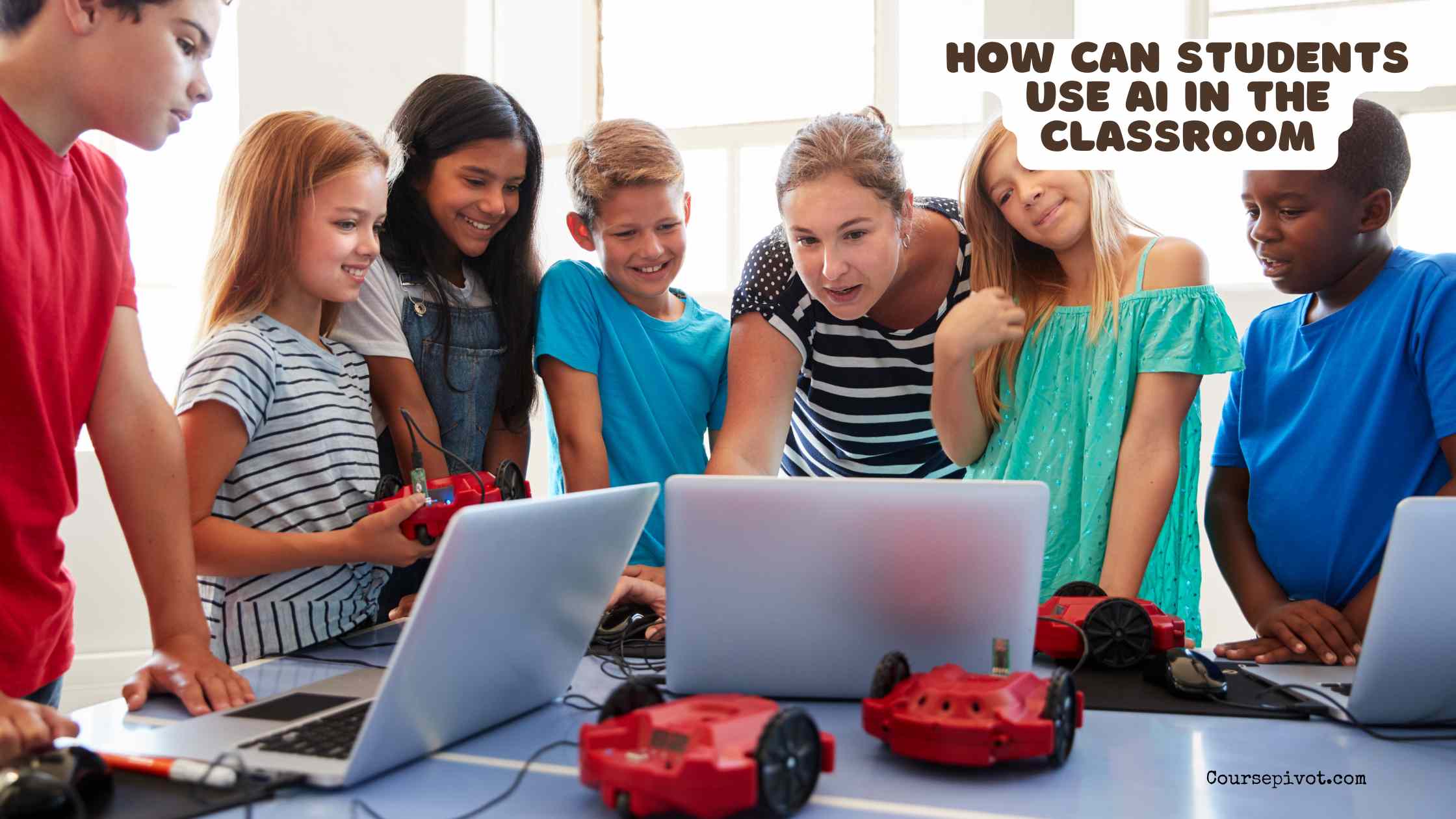
How can Students Use AI in the Classroom
Artificial Intelligence (AI) is transforming education, offering students tools to enhance learning, streamline tasks, and boost creativity. A 2024 EdTech survey found that 65% of students using AI tools reported improved academic performance and engagement. From research assistance to personalized study aids, AI can be a powerful ally in the classroom when used responsibly. This blog explores five key ways students can leverage AI in the classroom, providing practical strategies to maximize learning while maintaining academic integrity.
Table of Contents
Research and Information Gathering
AI tools can streamline research by quickly summarizing vast amounts of information from credible sources. Platforms like Grok or Perplexity can analyze articles, books, or websites, delivering concise insights. A 2024 Journal of Educational Technology study noted that 50% of students using AI for research saved an average of 3 hours per project.
For example, a student researching climate change can ask AI to summarize recent studies, highlighting key data like global temperature trends. This speeds up understanding without replacing critical analysis. Always verify AI-generated summaries with primary sources to ensure accuracy and avoid misinformation.
- Saves Time: Quickly compiles relevant information.
- Enhances Understanding: Summarizes complex topics.
- Encourages Verification: Prompts checking original sources.
How to Use: Input specific questions into AI tools like Grok, such as “Summarize recent studies on renewable energy.” Cross-check results with academic databases like Google Scholar.
Personalized Study and Practice Tools
AI can create tailored study aids, like quizzes or flashcards, based on your coursework. Platforms like Quizlet or Khan Academy’s AI features adapt to your learning pace, focusing on weak areas. A 2023 Educause report found that 60% of students using AI-driven study tools improved test scores by 10-15%.
If you struggle with algebra, AI can generate practice problems and explain solutions step-by-step. This targeted practice builds mastery without overwhelming you. Use these tools to supplement, not replace, classroom learning for best results.
- Targets Weaknesses: Focuses on areas needing improvement.
- Boosts Retention: Reinforces concepts through repetition.
- Adapts to Pace: Customizes learning speed.
How to Use: Use tools like Quizlet’s AI to create flashcards from lecture notes or ask Grok to generate practice questions on topics like “quadratic equations.”
Writing and Editing Assistance
AI can refine writing by offering grammar, style, and structure feedback, helping students craft clearer essays or reports. Tools like Grammarly or Grok’s writing features suggest improvements without doing the work for you. A 2024 Turnitin study noted that 45% of students using AI editing tools improved their writing quality.
For instance, drafting an essay on Shakespeare and running it through AI can catch awkward phrasing or suggest stronger transitions. However, avoid letting AI write entire assignments to maintain originality and adhere to academic integrity policies.
- Improves Clarity: Enhances sentence structure and grammar.
- Saves Time: Speeds up editing processes.
- Maintains Authenticity: Encourages student-driven work.
How to Use: Paste drafts into Grammarly or ask Grok for feedback, like “Suggest improvements for my essay introduction.” Revise based on suggestions, ensuring your voice remains.
Time Management and Organization
AI tools can help students manage schedules, deadlines, and tasks, reducing stress in a busy academic life. Apps like Notion AI or Todoist use AI to prioritize assignments and suggest study schedules. A 2023 Journal of College Student Development study found that 55% of students using AI planners reported better time management.
If you’re juggling exams and extracurriculars, AI can create a study calendar, reminding you to prep for a history test while balancing club meetings. This keeps you organized and focused, preventing last-minute cramming.
- Reduces Stress: Organizes tasks efficiently.
- Prioritizes Deadlines: Keeps assignments on track.
- Boosts Productivity: Maximizes study time.
How to Use: Input deadlines into Notion AI and ask it to create a weekly plan, or use Grok to suggest a schedule, like “Plan my study week for midterms.”
Creative Problem-Solving and Brainstorming
AI can spark creativity by generating ideas for projects, essays, or presentations. Tools like Grok or ChatGPT can offer unique angles or outline structures, helping students overcome creative blocks. A 2024 EdSurge report noted that 35% of students using AI for brainstorming produced more innovative projects.
For a history project, AI might suggest analyzing lesser-known figures or events, like the role of women in the Industrial Revolution. This inspires original work while encouraging critical thinking to refine AI-generated ideas.
- Sparks Inspiration: Offers fresh perspectives.
- Enhances Projects: Encourages unique approaches.
- Supports Critical Thinking: Requires evaluating AI ideas.
How to Use: Ask Grok for brainstorming help, like “Give me creative ideas for a biology project on ecosystems.” Use suggestions as a starting point, then develop your own analysis.
Why Using AI in the Classroom Matters
AI empowers students to learn smarter, not harder, enhancing efficiency and creativity. With 65% of students reporting better outcomes with AI tools, per 2024 data, it’s a game-changer for academic success. However, misuse—like over-relying on AI for assignments—risks plagiarism or reduced learning, with 30% of students facing academic penalties, per Turnitin. Responsible use aligns with educational goals, boosting skills for future careers.
At Coursepivot, we’ve supported students exploring AI’s role in education through essays, fostering ethical use. Using AI correctly saves time, sharpens skills, and prepares you for a tech-driven world, while misuse can derail progress. These strategies ensure AI enhances, not replaces, your learning.
Practical Tips for Responsible AI Use
Leveraging AI effectively requires balance and ethics. Here are actionable steps to integrate AI into your classroom routine:
- Learn Tool Functions: Explore platforms like Grok or Grammarly via tutorials on YouTube to understand their features.
- Set Ethical Boundaries: Use AI for support (e.g., editing, brainstorming), not to complete assignments. Check your school’s AI policy.
- Verify AI Outputs: Cross-check research summaries with sources from JSTOR or PubMed to ensure accuracy.
- Use Time Management Apps: Input assignments into Todoist or ask Grok, “Create a study schedule for my finals.” Coursepivot’s tutoring can guide AI-driven research.
- Practice Moderation: Limit AI use to 1-2 hours weekly to maintain independent learning and avoid over-reliance.
| Strategy | Benefit | Resource/Example |
|---|---|---|
| Learn Tool Functions | Maximizes AI effectiveness | YouTube tutorials, Grok |
| Set Ethical Boundaries | Ensures academic integrity | School AI policies |
| Verify AI Outputs | Maintains accuracy | JSTOR, PubMed |
| Use Time Management Apps | Organizes tasks | Todoist, Coursepivot tutoring |
| Practice Moderation | Prevents over-reliance | Weekly AI time limits |
These steps ensure AI enhances your learning without compromising integrity. Campus workshops or online forums can offer further guidance. Start small to integrate AI seamlessly.
Key Takeaways
Students can use AI in the classroom for research, personalized study, writing assistance, time management, and creative brainstorming, with 65% reporting improved performance, per studies. These tools save time, boost creativity, and enhance organization, but require ethical use to avoid pitfalls like plagiarism. Practical steps—learning tools, verifying outputs, and setting boundaries—ensure responsible integration. Resources like Coursepivot’s tutoring support ethical AI exploration in academics. By leveraging AI wisely, students can elevate their learning, stay organized, and prepare for a tech-savvy future while maintaining academic integrity.
Cite this article
You can copy and paste your preferred citation format below.
Martin, L. & Arquette, E.. (2025, August 21). How can Students Use AI in the Classroom. Coursepivot.com. https://coursepivot.com/blog/how-can-students-use-ai-in-the-classroom/



